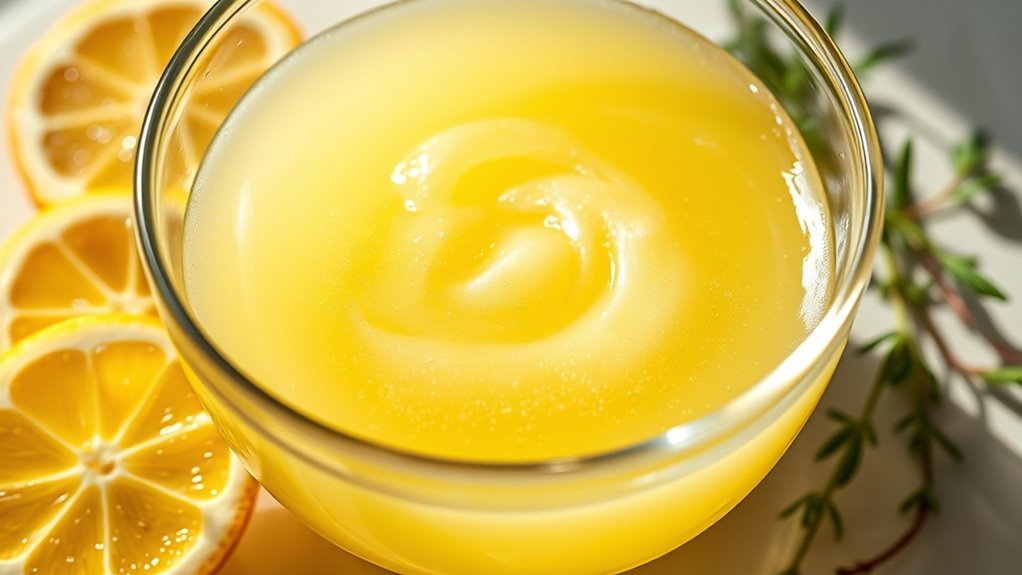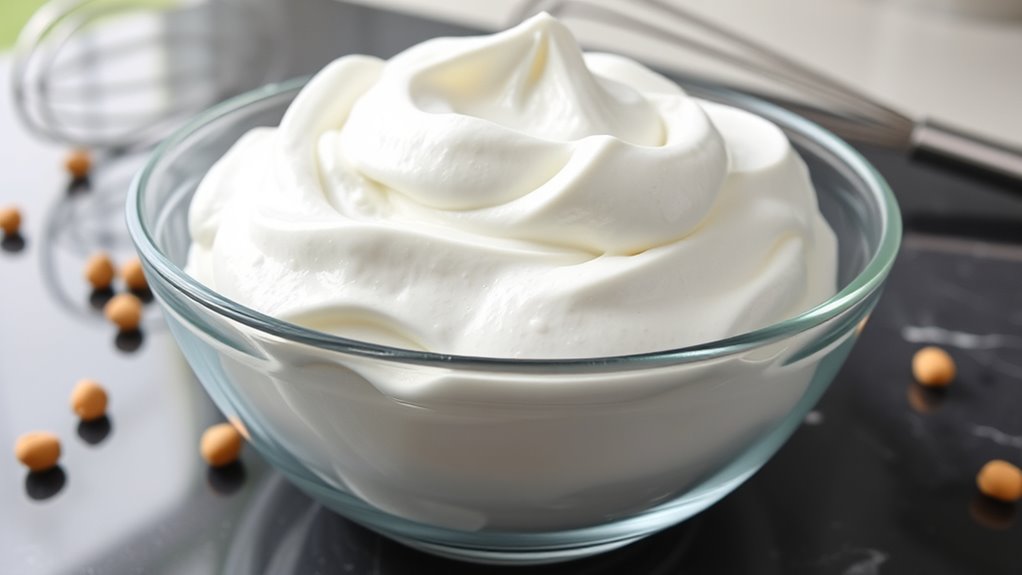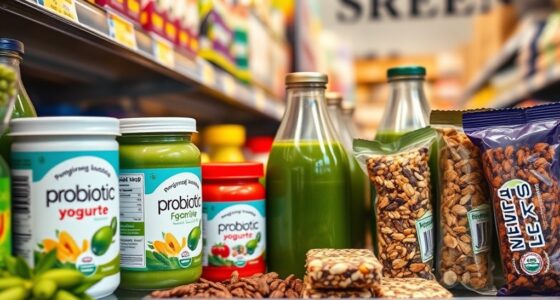Aquafaba is a versatile, plant-based substitute for egg whites that you can easily whip into stiff peaks for meringues, mousses, and baked goods. It’s made from cooking or canning beans and legumes, making it a sustainable and allergen-free option. Perfect for vegans or anyone looking to reduce eggs, aquafaba mimics the texture and function of egg whites effortlessly. Want to explore more about how this ingredient is transforming kitchens? Keep going to discover the full potential of aquafaba.
Key Takeaways
- Aquafaba is a viscous liquid from cooking legumes, used as a plant-based egg white substitute.
- It can be whipped into stiff peaks, making it ideal for meringues, mousses, and baked goods.
- Its versatility allows it to replace eggs in recipes like cookies, pancakes, and vegan mayonnaise.
- Aquafaba offers an eco-friendly, allergen-free alternative that reduces waste and supports sustainable cooking.
- Increasing popularity is driven by its ability to cater to vegans and those with egg allergies, expanding culinary options.

Have you ever wondered what aquafaba is and how it can transform your cooking? If you’re exploring plant-based alternatives or looking to reduce your reliance on eggs, aquafaba might just become your new best friend. It’s the thick, viscous liquid left over from cooking chickpeas, beans, or other legumes.
Discover aquafaba: the versatile, plant-based liquid that can replace eggs and elevate your cooking.
When whipped, it mimics the properties of egg whites—creating a foam that’s perfect for meringues, mousses, and even baked goods. Its versatility has gained popularity among vegans, allergy sufferers, and those seeking sustainable cooking options.
You can easily prepare aquafaba at home or buy it canned from the store. If you opt for canned chickpeas, simply drain the liquid and save it. No need to add anything extra—just measure out what you need for your recipe.
The key to getting good results lies in understanding its properties: when whipped, aquafaba forms stiff peaks, just like egg whites, and can hold its shape for quite some time. This makes it ideal for creating airy desserts or adding structure to baked goods without eggs. Plus, it’s flavor-neutral, so it won’t interfere with your recipe’s taste.
Using aquafaba is straightforward. Start by pouring it into a clean mixing bowl, then whip it with a hand or stand mixer. As you do, you’ll notice it begins to thicken and turn into a fluffy, white foam.
Depending on the recipe, you might need to whip it for several minutes until stiff peaks form. Once achieved, you can fold it into your batter or use it as a binder or leavening agent. Because it’s plant-based and allergen-free, it’s a safe and inclusive alternative for many dietary needs.
Beyond baking, aquafaba can also be used as an egg replacer in recipes like pancakes or cookies. It works well for vegan mayonnaise, mousses, and even cocktails that traditionally rely on egg whites, like a whiskey sour or a pisco sour.
Its ability to mimic egg whites without any animal products makes it a game-changer for plant-based cooks. In addition to its functional benefits, aquafaba’s eco-friendly aspect appeals to those wanting to minimize waste and reduce their environmental footprint.
Frequently Asked Questions
Can Aquafaba Be Used in Savory Dishes?
You might wonder if aquafaba works in savory dishes. The answer is yes; it can be used to add texture or act as a binder in recipes like veggie burgers, stuffing, or even as an egg replacer in savory pies.
Its neutral flavor makes it versatile, so you can incorporate it without altering the dish’s taste. Just remember to adjust seasonings accordingly for the best results.
How Long Does Aquafaba Stay Fresh in the Fridge?
When you ask how long aquafaba stays fresh in the fridge, you should know it generally lasts up to 4 to 5 days.
Make sure to store it in an airtight container to prevent absorption of other odors.
If it develops a sour smell or changes color, discard it.
For longer storage, freeze it in ice cube trays and use within a month for best results.
Is Aquafaba Suitable for People With Legume Allergies?
Imagine discovering a miracle that could change your entire baking game—that’s aquafaba for you.
If you have a legume allergy, though, steer clear. It’s made from the liquid of cooked legumes, so it could trigger a severe allergic reaction.
You don’t want to risk it, so always check with your doctor or allergist before trying aquafaba if you have legume allergies.
Safety first!
What Are the Environmental Benefits of Using Aquafaba?
You’re curious about the environmental benefits of using aquafaba. By choosing aquafaba, you help reduce food waste since it’s made from the liquid of cooked beans or chickpeas that would otherwise be discarded.
Using it also lessens the demand for eggs, which require significant resources like water, feed, and land to produce.
Can Aquafaba Be Whipped Into Stiff Peaks Like Egg Whites?
You might think whipping aquafaba into stiff peaks is impossible, but surprisingly, it’s quite doable. With a good hand or stand mixer, you can achieve fluffy, egg-white-like peaks, especially if you add a pinch of cream of tartar.
It takes a bit of patience, but trust me, this plant-based marvel can stand tall in your desserts, proving that sometimes, the best things come from unlikely sources.
Conclusion
As you embrace aquafaba, remember it’s like the phoenix rising from the kitchen’s ashes—transforming humble bean water into a versatile marvel. Just as Icarus soared toward new heights, you now reach for innovative, plant-based solutions that challenge tradition. By choosing aquafaba, you’re not just substituting ingredients; you’re rewriting culinary stories, daring to dream beyond the familiar. In this act of creation, you join a movement that’s as boundless as the sky itself.








